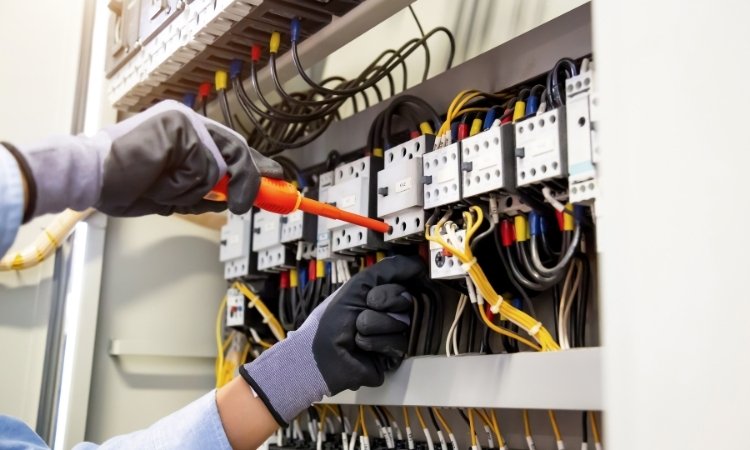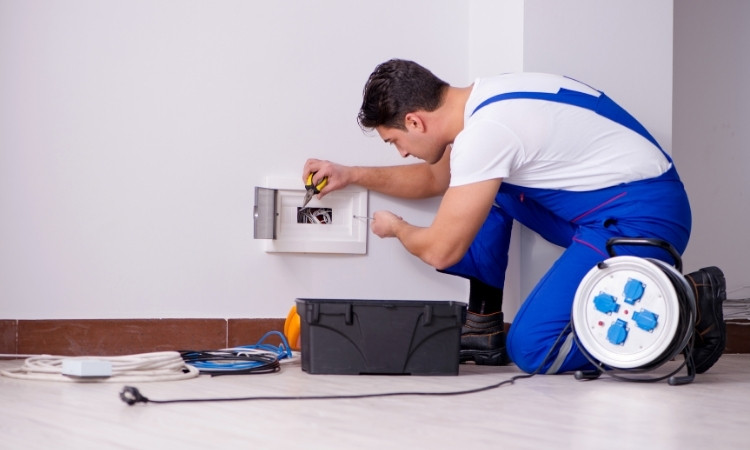When it comes to protecting your home and loved ones, nothing is more critical than following the right Home Electrical Safety Rules. In a city where most of us live in high-rise HDB flats or condominiums, one small mistake with an electrical socket or wire can lead to fire, injury, or even property damage that affects your neighbors.
I remember visiting a client’s home in Jurong West, where a short circuit started because of a poorly connected extension plug. It was a close call, but completely avoidable. That experience stuck with me. That’s why knowing and applying Essential Home Electrical Safety Rules is crucial.
Below, you’ll find seven of the most important Electrical Safety Rules for Home that are simple to follow but powerful in preventing accidents. Following these rules can protect your home, your loved ones, and even your entire block. Professional services providers, such as LS Electrician Services Singapore, explain the essential home electrical safety rules in Singapore. They offer you house re-wiring, power failure troubleshooting, and lighting protection system services in Singapore.
1. Only Use Licensed EMA-Certified Electricians in Singapore
Electrical work in Singapore must be done by a licensed electrician. This is one of the most important home electrical safety tips. The Energy Market Authority (EMA) provides licenses to electricians who meet safety standards. This means they are trained to handle electrical wiring, repairs, and installations properly.
In one case I handled, a homeowner in Tampines asked a friend to install a new power socket. The wiring was done incorrectly, and within a week, the circuit started sparking. They were lucky it didn’t cause a fire.
What to do:
Always check that your electrician is EMA-certified. You can verify their license on the EMA website or ask them to show their license number.
2. Don’t Overload Power Sockets in Small Spaces
Many HDB flats and older homes in Singapore have limited wall outlets. This leads people to use multi-plug adapters and extension cords everywhere, especially in bedrooms and kitchens. Overloading one power points can cause it to heat up and possibly catch fire.

What you can do:
Spread out your appliances across different sockets. Avoid plugging in more than one high-powered item (like a kettle, microwave, or hairdryer) on the same adapter.
Tip: If you feel the plug or adapter getting hot, unplug everything and check for damage.
3. Check Cables and Power Cords for Damage Often
Our humid climate causes wires and cables to wear out faster. Sometimes, cables get rolled under the bed or tucked behind furniture where they are never seen for a long time. Damaged cables can lead to electric shocks or even fires.
I once noticed that a laptop charger in a home office in Clementi had exposed copper wires. Nobody else noticed it until I made them aware of it.
What to do:
Every month, take a few minutes to inspect cords. Look for cracks, black marks, or bent plugs. If anything looks unsafe, replace it immediately.
4. Keep Electrical Items Far from Water
In small bathrooms or kitchens, it’s tempting to place fans or portable water heaters close to the sink or shower. That’s very dangerous. Water and electricity are a deadly combination.
In Yishun, a young boy got a shock when using a hairdryer placed next to the basin. He was fine, but it was a scary moment for the family.
Rule to follow:
Always keep a safe distance between water sources and electrical appliances. And never touch switches or plugs with wet hands.
5. Unplug Appliances You’re Not Using
Leaving devices plugged in all day may feel convenient, but it’s risky. In Singapore, we often face sudden thunderstorms that can cause electrical surges. These surges can damage your plugged-in appliances or even cause sparks.
Simple habit:
Turn off and unplug your kettle, rice cooker, and TV before bedtime or when you leave the house. It saves electricity, too.

6. Use the Correct Voltage for All Appliances
Singapore uses 230 volts, but many people bring in electronics from countries like the US or Japan, where the voltage is different. Plugging in a foreign appliance without the proper converter can destroy the appliance and possibly cause injury.
I met a couple in Serangoon who plugged in a blender from the US. It sparked and tripped the whole house circuit.
What to check:
Look at the voltage rating before plugging anything in. If it doesn’t match Singapore’s 230V, use a proper step-up or step-down converter.
7. Test Your RCCB and Consider Installing AFCIs
All homes in Singapore are required to have a Residual Current Circuit Breaker (RCCB). It’s designed to shut off electricity when a current leak is detected. But most homeowners forget to test it.
Here’s how:
Once every 3 to 6 months, press the “test” button on your electrical panel. The power should trip. If nothing happens, the RCCB is not working, and that’s dangerous.
Extra safety:
Install Arc Fault Circuit Interrupters (AFCIs) if you live in an older home. They help prevent fires caused by faulty wiring.
Conclusion:
Following Home Electrical Safety Rules in your Singapore home isn’t about being overly cautious; rather, it’s about being responsible. A lot of electrical fires, shocks, and appliance issues begin with little mistakes we can avoid. Whether it’s unplugging appliances at night, checking for damaged cords, or hiring the right electrician, each action adds a layer of protection.
I’ve seen homes where people followed these Home Electrical Safety Rules and stayed safe through power surges and circuit trips. And I’ve seen the opposite, such as homes damaged because someone skipped a simple safety step.
Don’t wait for an accident to make you take action. Make these Home Electrical Safety Rules in Singapore part of your everyday life, and protect your home the smart way.
